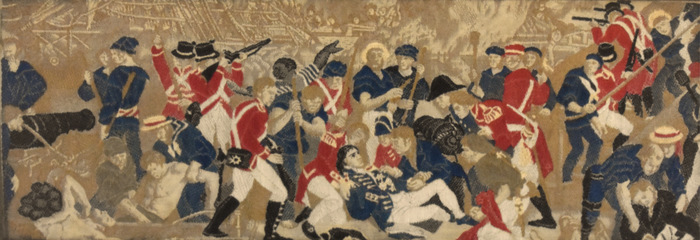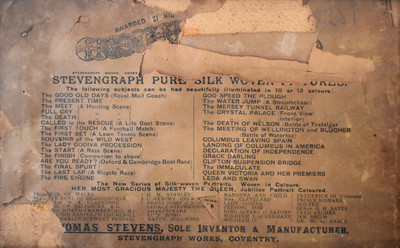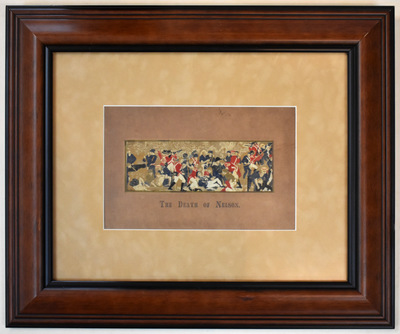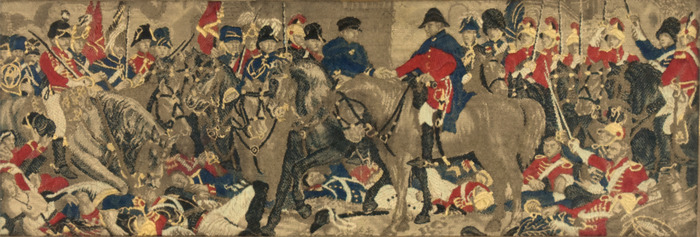Thomas Stevens "The Death of Nelson"
-
- Thomas Stevens
- (1828 - 1888)
- England
- Image Size: 2.25 x 7
- Frame Size: 15.25 x 18.5
- Medium: Silk
- "The Death of Nelson"
- Contact for Price & Info
- View All By This Artist
-
-
Biography
Thomas Stevens (1828 - 1888)
n the 19th century the town of Coventry, England, was the centre of a ribbon weaving industry. Thomas Stevens was born in Foleshill, just to the north of Coventry, in 1828 to a relatively poor family.[1] Stevens worked for Pears and Franklin, a local ribbon weavers in Coventry, and by 1854 had created his own ribbon firm.[1] In 1860, however, the Cobden–Chevalier Treaty was signed; this free trade treaty introduced new competition into the industry, leading to a collapse in the local ribbon economy and a huge loss of employment in Coventry.[2]
Stevens had considerable experience of experimenting with the Jacquard loom and responded to the local recession by trying to develop new products. He had invented a way of using the programmable loom to weave colourful pictures from silk.[1] By 1862, Stevens could produce four different designs; he attempted to appeal to the mass market, selling his products between six pence and fifteen shillings each.[3] Some of these pictures were used for bookmarks, greetings cards and specialised products for the Admiralty.[1]
Business boomed and Stevens acquired two larger factories in turn; by 1875 he was calling his product the "Stevengraph", named after himself.[1] He exhibited internationally in America, France and Holland, winning some 30 medals and diplomas.[1] In 1878 Stevens moved to London and began to mount his Stevengraphs as framed pictures - by the late 1880s Stevens had over 900 different designs.[3] In 1888 Stevens died following a throat operation and was buried in Coventry.



